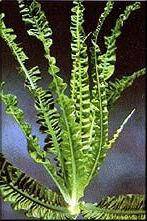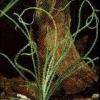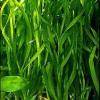Crinum natans
Scientific name: Crinum natans
Family: Amaryllidaceae
Maximum size reached under cultivation: 50 - 100 cm (19.69 - 39.37 inch)
014
Recommended pH range: 6 - 7.4
Recommended water hardness: 2 - 15°dGH (35.71 - 267.86ppm)
0°C 32°F30°C 86°F
Recommended temperature range: 15 - 25 °C (59 - 77°F)
Preferred propagation method: Bulb shoots
Native to: Africa
Growth rate: Slow
Recommended substrate: Fine gravel
Lighting requirements: Bright
Ideal placement in tank: Background
🌱 Common Names
Floating Crinum, African Onion Plant
🌍 Origin
Crinum natans is native to tropical regions of Africa, where it inhabits slow-moving rivers, lakes, and marshes. In the wild, it is found in shallow freshwater habitats and adapts well to fully submerged conditions, though its bulb can tolerate brief periods of lower water levels.
💡 Lighting Requirements
This plant prefers bright lighting for optimal health and coloration. While it can survive under medium light, inadequate lighting results in slower growth and paler leaves. Consistent, high-quality illumination supports both foliage density and vibrancy.
🏞️ Planting Area
Crinum natans is best placed in the background of large aquariums due to its long, ribbon-like leaves. In deep or tall tanks, it can serve as a dramatic focal point when planted centrally. When planting, avoid burying the bulb entirely—leave the top exposed to prevent rot and ensure proper aeration around the bulb zone.
🌱 Propagation
This species propagates through bulb offshoots. As it matures, Crinum natans produces smaller daughter bulbs at the base of the mother plant. Once they develop roots, these can be carefully separated and replanted. Handle the bulbs and root zone gently, as they are sensitive to damage and transplant stress.
💧 Water Parameters
- Recommended pH range: 6.0 – 7.4
- Recommended water hardness: 2 – 15 °dGH (35.7 – 267.9 ppm)
- Recommended temperature: 15 - 25 °C (59 - 77°F)
⚙️ Difficulty
Medium. Though tolerant of a wide range of water parameters, Crinum natans grows slowly and may take several weeks to fully establish. Once rooted, it becomes a resilient and long-lived background plant that most herbivorous fish avoid due to its tough, fibrous leaves.
📝 Short Description
Crinum natans is a visually striking aquatic plant with long, ribbon-like leaves that sway elegantly in the current. While fully aquatic in aquarium setups, its bulb in the wild can handle temporary drops in water level, making it a hardy species in nature. Its graceful form and large size make it ideal for spacious aquariums, especially in natural or biotope-style layouts.
Though it grows slowly, patience is rewarded with stunning foliage, occasional flower stalks, and a commanding presence in the tank. For best results, provide stable conditions, nutrient-rich substrate, and low to moderate water flow. Minimal maintenance and resistance to nibbling fish make Crinum natans a favorite among aquarists looking to balance beauty with resilience.

 Crinum calamistratum
Crinum calamistratum Crinum thaianum
Crinum thaianum